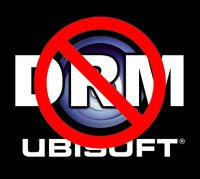
The extreme approach to DRM had failed on two fronts. It has not stopped increasingly brazen pirates. It's also angered paying customers to the point where they abandon the platform or turn to piracy. Publishers are not going to abandon copy protection on their products. But they're going to have to consider changing tactics. Let's look at a few alternative DRM system and see how they measure up in fairness and protection.
The No-DRM Method (aka The Honour System)
This method has been advocated by Sins of a Solar Empire publisher Stardock games. It's pretty self-explanatory. The single player game has no DRM while multiplayer requires a CD key. Stardock has blasted it's competitors DRM in the past. Even to the point of publishing a "Gamers Bill of Rights". The game does require you to register your legitimate copy with Stardock to purchase expansions or get patches. The system is by far the most user friendly. No keys to input, no install limits. However, the game remains wide open to piracy. Sins still sold quite well though. The game itself wasn't exactly a mainstream title so it could fly under the radar. This method works best for indie titles but isn't going to work for blockbuster releases.
Advantages:
-Most user friendly
Disadvantages
-Leaves it wide open to piracy
-Only practical for smaller releases and indie games
CD Keys and Disc-In-Drive
This is the DRM system that most old-school gamers are familiar with. When you bought a game, it had a key tied to it. Usually printed in the manual. You had to entre a valid key when you installed the game. Otherwise, it refused to work. The game disc also had to be in the drive in order to play it, just like with consoles. The CD Key method is by far the most commonly used DRM system today. Most non-gaming software including Windows still uses it. It has become less common for games. Fallout 3 is one notable title that still uses it. It's simple and it works. However, it's fairly easy to find pirated keys available online that circumvent activation.
Advantages:
-User friendly
-Tried and true method
Disadvantages:
-Relatively easy to circumvent
Steam
Valve Software launched Steam as the DRM method of choice for Half Life 2. Since 2005, the system has exploded into one of the most popular gaming stores online. It wouldn't be a stretch to call it the iTunes of video games, since it works in the same way. In order to use it, you must sign up for a Steam account and download the client software. You then purchase games through the Steam Store, which are downloaded directly to your computer.
The games are tagged to your user account and can be installed an unlimited number of times on an unlimited number of systems. Steam also lets you make disc based backups of games. So you don't need to re-download them if they're uninstalled. It still requires an internet connection but you only have to be connected to boot the game. In the last couple of years, it's become the dominant service for gamers. Mainly due to the ease of purchase and frequent sales the store has.
The system is not perfect though. Steam does allow third party DRM systems to be used with their titles. The store does list what these restrictions are, which is a major step up. Therefore, gamers know which titles to avoid. You also still need an internet connection and download times are lengthly. Steam doesn't have boxed games. Furthermore, if Steam should close down its servers, the games you have become unplayable.
Advantages
-Relatively user friendly
-Online distribution offers easy, one stop shopping
-DRM isn't intrusive
-Discloses DRM limitations if any
Disadvantages
-Still allows 3rd party DRM on some games, such as Assassin's Creed II and Wings of Prey
-Requires an internet connection
-Download times can be lengthly
-Games become unplayable should servers shut down

0 comments for this post